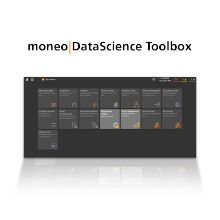- Introduction to moneo
- moneo | Data Science Toolbox
- Smart Limit Watcher
Smart solution for condition-based monitoring
Smart Limit Watcher provides real time machine monitoring and alerting to improve your plant preventive maintenance initiatives.
- Implement artificial intelligence in manufacturing without a background in data science.
- The 5-step wizard evaluates available data sources, applies the best fit model from our library, and trains and tests the model automatically.
- Models use normal machine operating data, including cyclical process changes, and do not require fault or failure data.
- Once configured, the Smart LImit Watcher continuously monitors the identified variables that affect the overall effectiveness of your machine and alerts you to process drifts that could compromise equipment health or product quality.
Proven statistical models
moneo’s Smart Limit Watcher uses 3 proven and widely accepted statistical algorithm models constructed specifically for industrial automation.
Simple dynamic functions with clear distinctions of the target and support variables
Effective for many applications
Limitations in complex data relationships
More complex data relationship technique than linear regression
Highly optimized histogram-based decision tree learning algorithms such as Gradient-Based One-Side Sampling (GOSS) and Exclusive Feature Bundling (EFB)
Approximates continuous functions that have a direct correlation but are non-linear
Highest level of complexity
Multi-layer perceptron (MLP) learns using backpropagation to compute a gradient descent with respect to weights and approximates all functions with a correlation
But you don't need to be an expert on these algorithm models! Using its graphical interface designed specifically for industrial automation, the Smart Limit Watcher guides you through the entire process of assigning the necessary measurements to automatically implement the correct model to your application. The guided tour video below demonstrates this simplicity.
Guided tour: moneo Smart Limit Watcher
Clear and understandable alerting
Smart Limit Watcher automatically sets up confidence bands based on data from "good condition" training.
- No need to simulate fault conditions.
- Deviations from the allowable ranges triggers automated warnings and alarms.
- Sensitivity ranges are user-adjustable for fine tuning to specific requirements.
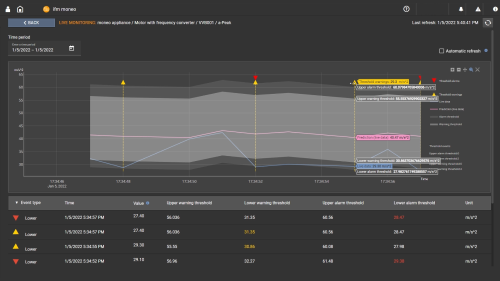
Benefits
Application methods
There are two main application methods for which the Smart Limit Watcher can be applied to most industrial machines.
Supportive (Vertical) measurements
- Related measurements of different types on a single machine that affect its operation
- Generalist approach suitable for most applications
- Evaluation required to determine which parameters influence mechanical health
- Target variable is identified as the main parameter to monitor
- Support variables influence the health of the machine to varying degrees
Comparative (Horizontal) measurements
- The same measurements from multiple devices of the same type
- Devices are phyically connected and operate in unison on the machine
- Potentially fewer sensors required than in the supportive method
Example applications
Compression system condition monitoring
Method: Supportive (Vertical) measurements
The Smart Limit Watcher tracks the mechanical health using the vibration signal V-RMS for potential wear. This measurement has the strongest influence on the compressor availability, so it is identified as the target variable.
Support variables include current amps and rotational speed of the motor, system pressure and system temperature.
Supportive (vertical) method representation
| Item | Sensor | Variable | Measurement description |
|---|---|---|---|
| 1 | 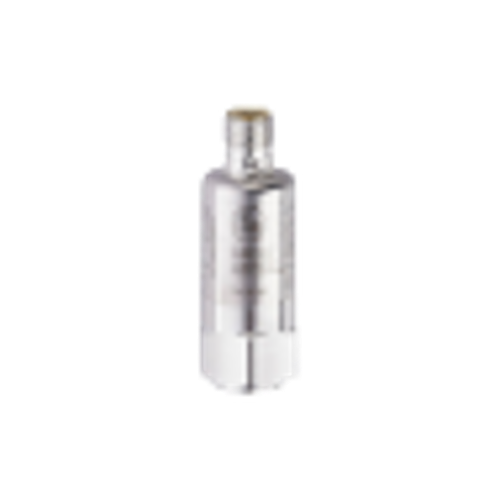 VVB vibration sensors |
Target | Vibration is the primary measurement for mechanical condition.
|
| 2 | Motor current sensors |
Support | Motor current indicates total energy used to power the work produced by the compressor.
|
| 3 | 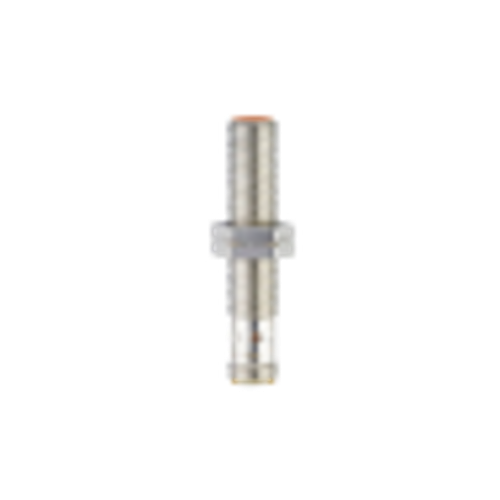 DI compact speed sensors |
Support | Rotational speed is a significant indicator of motion and directly impacts changes in vibration.
|
| 4 |  TS RTDs and TR tempeature sensors |
Support | Temperature is linked as another form of energy loss.
|
| 5 | 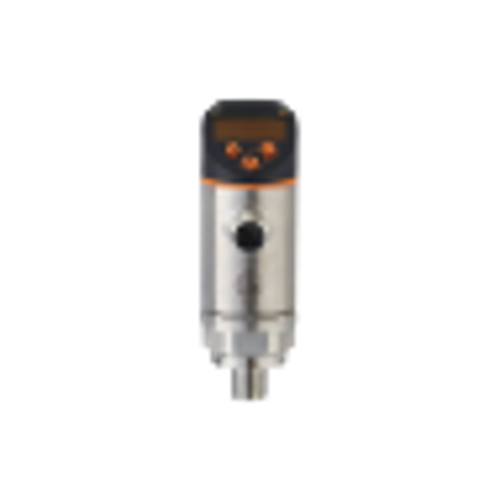 PN pressure sensors |
Support | Pressure is the work output of the compressor.
|
Multiple conveyor drive motor condition monitoring
Method: Comparative (Horizontal) measurements
Applying the Smart Limit Watcher to a conveyor with multiple drive systems compares how each drive operates in relation to the others. The vibration measurement V-RMS compares the mechanical integrity of the rotating components and the quality of their connection to the complete conveyor system. Any drive system that performs differently than the others is identified.
In this implementation each of the variables have an equal weight to their relevance.
Comparative (horizontal) method representation
| Sensor | Variable | Measurement description |
|---|---|---|
 VVB vibration sensors |
Target and suport | Vibration is used as the primary measurement for mechanical condition.
|
